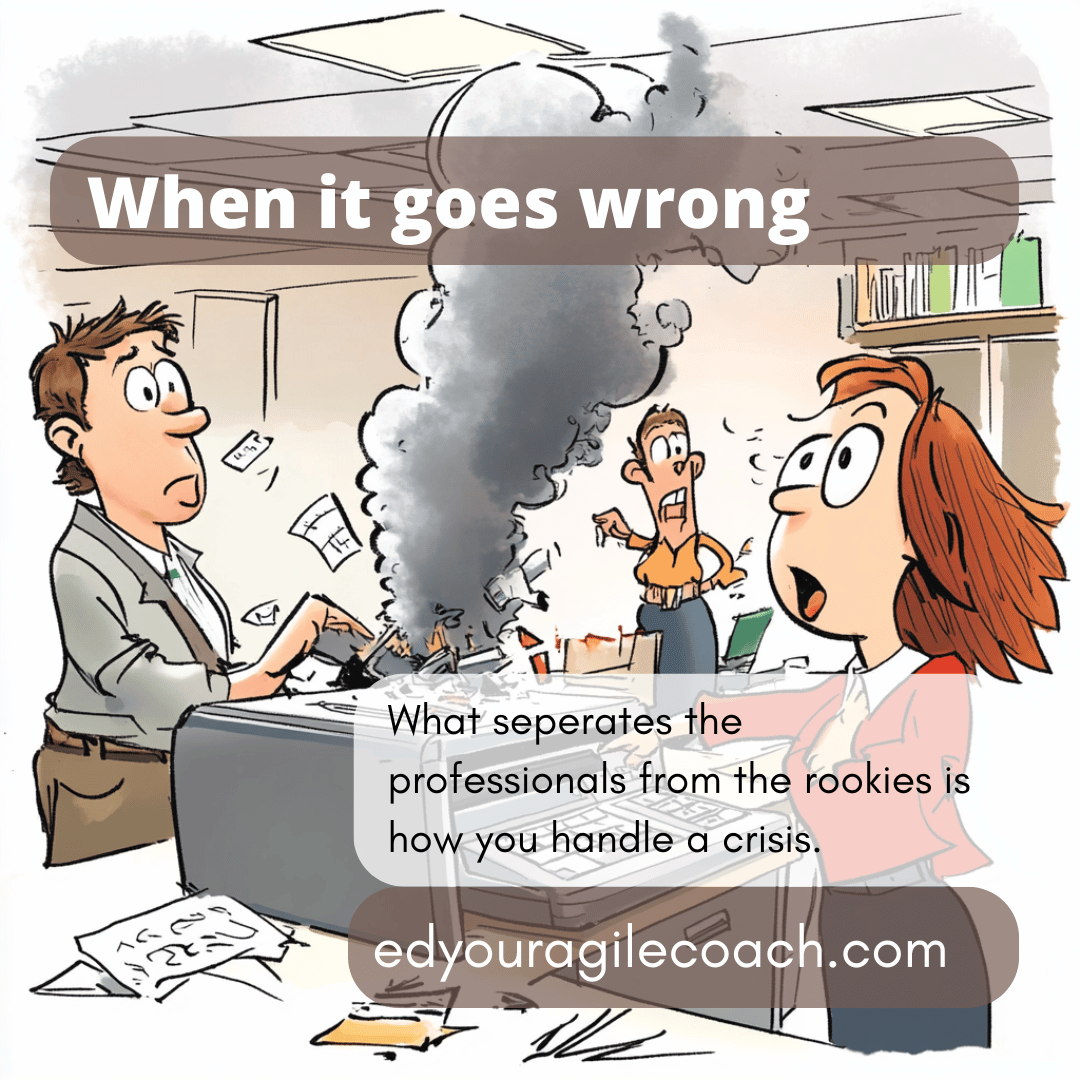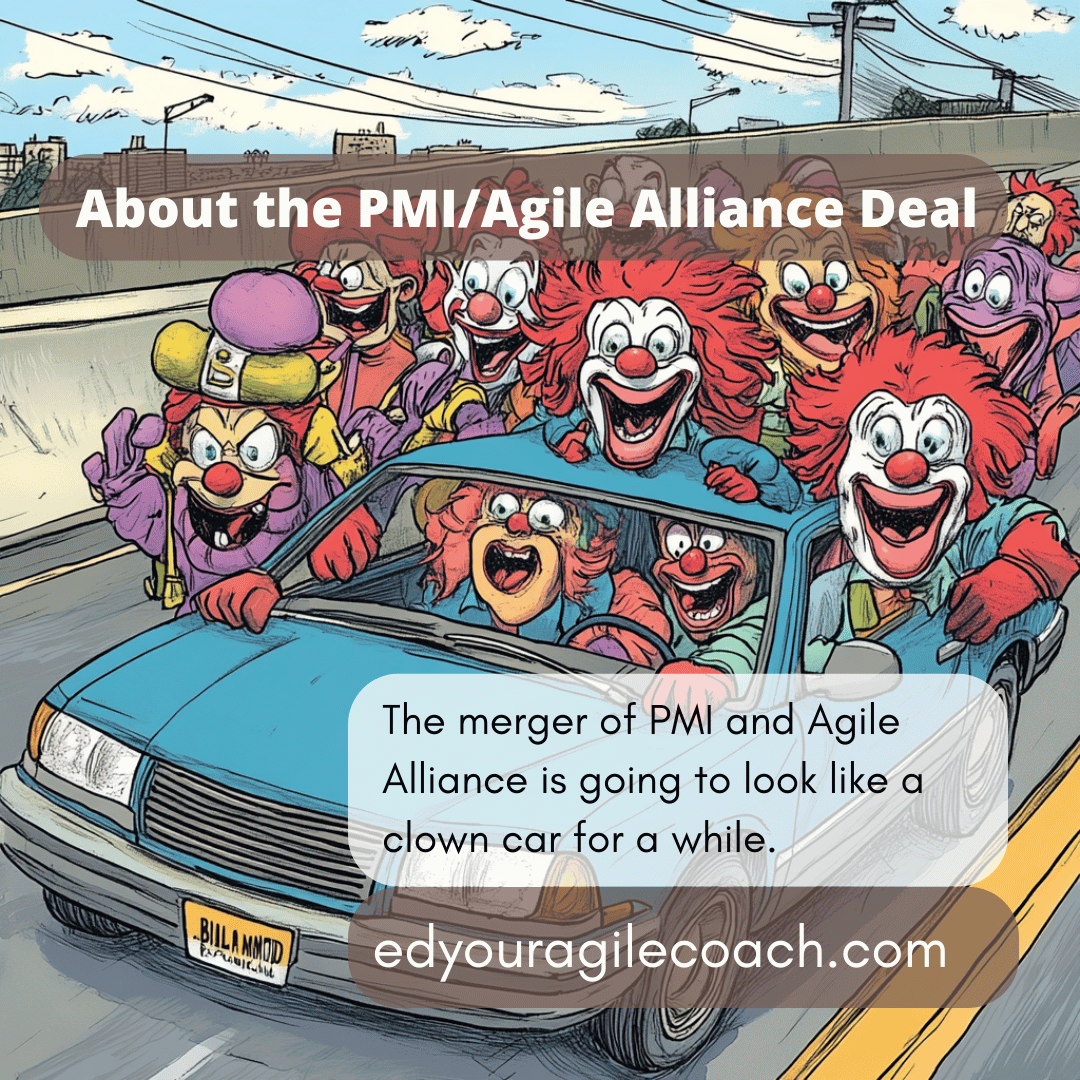A scrum master walks into a PMP classroom...

This week's big news is the story of the Crowdstrike outage, which took down plenty of Microsoft-centric systems. I have many opinions about this event, but I will wait until we learn more about the situation. It is better to share an informed opinion than to pop off with a hot take that might be misinformed. I participated in an experience outside my comfort zone and a pathway to returning to work. It opened my eyes to a few things, and it is necessary to discuss the experience.
Doing something different –
As part of the WOIA program, I walked into a Project Management Professional course. As a scrum master and agile professional, it felt like being a vegetarian walking into a butcher shop. As a developer and agile person, my conditioning makes me view Project Management Professionals (PMPs) as backward, bureaucratic, and harmful micromanagers who obstruct project delivery. The next thing I know, I am in a virtual classroom learning to create PERT charts and risk metric diagrams. It also did not help that many of the people I clashed with in my career were PMP professionals who felt their credentials were a substitute for leadership and competence.
I decided to go into training with a growth mindset and good humor. Although I don't think Waterfall is an excellent approach to project management, learning more about it would help me grow my skills and understand which situations require more traditional project management techniques. What I discovered was revelatory.
If the Crowdstrike outage proved anything, it illustrated that living in a post-modern society is disorienting and complicated. A small error in a text file configuring a piece of security software created a series of cascading failures that took down systems worldwide. To avoid these catastrophes, people have set up systems to improve quality, reliability, and ease of update. Human beings create these systems, so they are subject to human frailty. As I have said, humans are messy and can make mistakes. So, humans do what they can to learn from their mistakes and mitigate future problems. The tolerances are exacting and require nearly superhuman attention to detail.
Why do we need the PMP –
As society faces increasing complexity and detail, professional training and processes have been created to make handling these challenges easier. This training is for the CPA or Certified Public Accountant in finance and accounting. When you have a CPA, you can create a balance sheet and a shareholder report for customers. If something is wrong, it is because of fraud rather than incompetence or negligence.
The Project Management Professional dominates the world of project management because projects can run into the billions of dollars and transform entire communities. The field needed a version of CPA to document and deal with the complexities of contemporary projects. The Project Management Professional credential is that certification. Receiving its origins in the Manhattan Project, the Army Corps of Engineers, and the U.S. Navy, the PMP credential allows people to stay on top of significant efforts with tremendous complexity and scope. Executives entrust project management professionals (PMPs) certified by the industry standard PMP credential (akin to the CPA in finance) to ensure their financial resources are utilized efficiently.
As an agilist, I often saw the PMP as an enemy to be overcome or worked around because they were more interested in documentation instead of working software and systems. It was a profound conflict of values between those who valued the Agile Manifesto and those who did not. To my surprise, the Project Management Insitute, the people who accredit PMPs, have embraced Agile and understand that Waterfall techniques and Agile can work together, like marshmallow fluff and Nutella.
While I was still grappling with bureaucracy, forms, charts, and documents, iterative and agile approaches are now being integrated into those systems. As someone who understands the Scaled Agile Framework for the enterprise and has worked as a scrum master and agile coach, I find it refreshing to see the PMP credentials embrace Agile instead of actively opposing them. It also has a reality check because the people paying the bills do not understand the terminology and values of Agile. These people understand dollars and cents, the amount of work completed, and deadlines. The PMP will help bridge the gap between the world of Business, executives, and technology folks. It is an excellent bit of wisdom to possess.
Still agile but with a seat at the table –
Does this mean I have become coopted by the clerisy of the Project Management Professional certification? No, it means I have more tools to help spread agility and get things done in organizations. It also gave me an understanding of the cultural and social issues that make project management an art and a science. Agile works in environments with high trust, but if you work in an organization lacking trust, PMP methods will build trust so that you can become more agile in the long run.
For the first time in my career, I understand the rules that govern a large corporation's opaque project governance world. Understanding this system will make me more successful as an agile professional. It also helps that I will be able to tell human resources departments that I have a PMP certification, which corporations are increasingly demanding for Director and manager-level roles within their organizations.
I have always been a bit of a misfit, but earning a PMP allows me to sit at the exclusive table in organizations and help make work more satisfying, sustainable, and sane. It is the kind of struggle that will pay off professionally and personally. I hope to improve the office one project at a time.
Until next time.




Comments ()